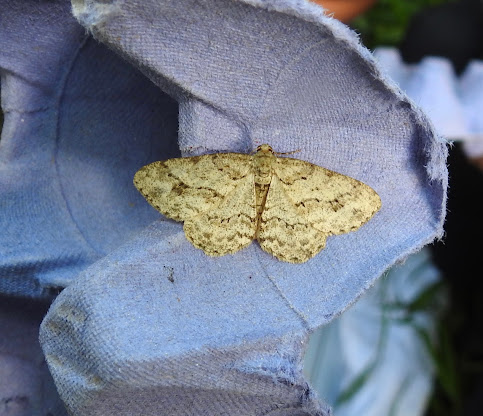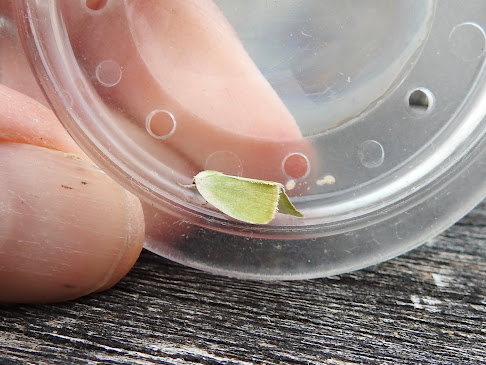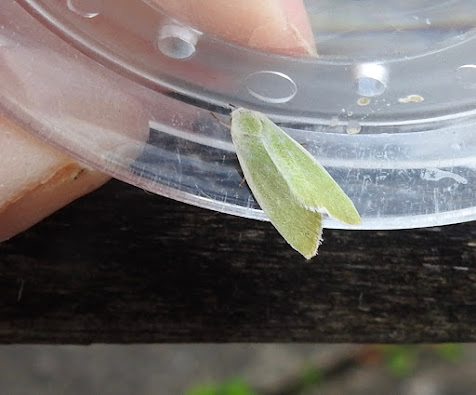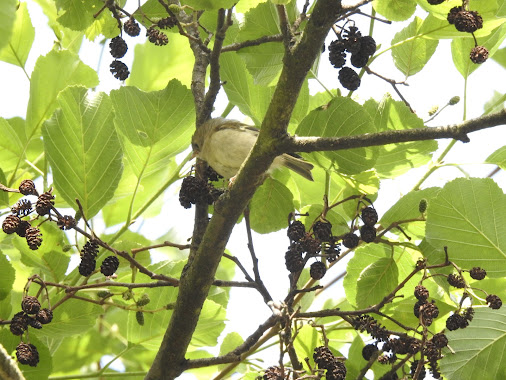Before I start on today's adventure, I'd like to take you back to last week. Do you remember this?
 |
| Shaded Pug |
 |
| Our garden is in the tetrad marked Me. |
 |
| The meadow |
 |
| Common Spotted Orchid |
 |
| Five-spot Burnet ag |
Before I start on today's adventure, I'd like to take you back to last week. Do you remember this?
 |
| Shaded Pug |
 |
| Our garden is in the tetrad marked Me. |
 |
| The meadow |
 |
| Common Spotted Orchid |
 |
| Five-spot Burnet ag |
Dave joined me for our usual Sunday morning stroll around the patch. The visit was blighted by a strong south-westerly and we struggled to see much.
A few Small Skippers were our first of the year, and there were many more Ringlets and Large Skippers than last week. We eventually tallied 20 Marbled Whites but there would probably have been more if the wind had been lighter.
 |
| Small Skipper |
 |
| Adult Little Ringed Plover |
 |
| Red Kite |
Shortly after completing my last posting, calamity struck. Well perhaps that's going a bit far, but we lost electrical power to our house. Once we'd discounted a standard power cut it became apparent that we required the assistance of our electricity supplier and various men with increasingly large diggers to get us up and running again. Although we got emergency power restored through a cable linking us to our neighbour within four hours, we had to "wait in" for the guys to dig up the pavement to get things back to normal.
This meant no birding.
Fortunately, I could still do moths. So on Thursday night I caught 114 moths of 37 species. Whether any were new to the garden is open to conjecture, but there were definitely 16 new for the year. These were: Green Oak Tortrix, Lime Hawk-moth, Bird-cherry Ermine (five), Common Footman, Red-barred Tortrix, Elephant Hawk-moth (three), Peppered Moth, Flame (two), Spotted Shoot Moth, Dark Arches, Water Veneer (nine), Marbled Minor ag (three), Euzophera pinguis, Sallow Kitten, Leopard Moth, and Blood-vein.
 |
| Lime Hawk-moth |
 |
| Elephant Hawk-moth |
 |
| Sallow Kitten |
 |
| Peppered Moth |
You can't beat a pile of stunning moths to raise the spirits. But of course there always a few "don't knows" to tax the brain, usually Pugs and micros.
 |
| Pug sp |
 |
| Pyrallid sp |
I'll come back to the Pug later, but I was informed that the Pyrallid was an Ephestia ag. So new for the garden but unidentifiable without dissection, and released to fly again. I'll come back to that later too.
This morning I joined a party of moth-trappers to examine the overnight captures at HOEF College Wood, a previously unexplored (by mothers) wood. It was very exciting. The two experts were Bob and Lee, and I tagged along with a few garden moth-trappers and about a dozen excited teenagers. About seven traps had been set up (I lost count) and we trailed from one to another marvelling at the numbers caught and the variety discovered. They told us they would only be showing us the macro moths, because the micros would take too long. Fair enough.
Before we started Bob invited us all to guess how many macro-moth species we would find. The highest guess was 85, and it wasn't high enough. The final figure was 93. My own notebook only got up to 59, so I missed quite a few, but I tried hard to record lifers.
These are the ones I managed to photograph:
 |
| Pebble Hook-tip |
 |
| Burnished Brass |
 |
| Brown Scallop |
 |
| Engrailed |
 |
| Sandy Carpet |
 |
| July Highflyer |
 |
| Clouded Brindle |
 |
| Dot Moth |
 |
| Green Arches |
To these I should add Plain Golden Y, and Lilac Beauty which were resting in a display trap of "moths we caught earlier".
So that's just the lifers. I'll be adding the year-ticks to my year list page, suffice to say there were a lot.
Now, do you remember the unidentified Pug from my garden at the start of this ridiculously long post? Well I was chatting to Lee, one of the leaders, and he was keen to show me an identification app called Obs identify. It seems to be Dutch, and he reckoned it was extremely accurate. I asked if it could make an assessment of my Pug, which I had touted on Twitter as a possible Shaded Pug (very local and rare in the West Midlands). We decided to give it a go, and it came out as a 93% confidence identification of Shaded Pug.
However, I was recommended to send the photo to David Brown (better than the app) for a definitive call.
I will update as soon as I get his verdict....Six months later (I forgot to update this post) I can confirm that David agreed it was a Shaded Pug.
I'm sorry some of the photos are a bit blurred, but it was all very frenetic. Just to show how much better than my garden College Wood was, this is a photograph of one tray of Buff-tips taken from just one of the traps.
Back to the app. I also tried it out on the Ephestia ag and it came up with the closely related, and rare, Vitula biviela, but dissection would still have been necessary for certainty, so I'm no further forward.
As for birds, I noticed a singing Garden Warbler, a singing Willow Warbler, and saw a Red Kite on the way home.
Anyone expecting to read that I have added Little Bittern to my West Mids list will be very disappointed in me. I got the news promptly and then allowed myself to be distracted by worries about possible long queues for hides, long waits for a bird that may not appear and all the other things which put me off twitching. The upshot was that I delayed an extra day, and this morning learned it had gone. I just don't have what it takes any more.
Instead I have been moving very short distances and birding within the confines of Redditch. On Friday I made an early morning visit to Arrow Valley Lake to beat the heat. This produced at least two newly fledged Little Egrets, proof of breeding which was reinforced when I met Mark Islip who told me a pair had fledged four young. This is probably not the first breeding record for Worcestershire because after a failed attempt here in 2017, juveniles were seen at Upper Bittell in 2020 and it is likely that breeding occurred there.
This morning I visited Lodge Pool and Southcrest Wood for the first time. It was another warm morning and the birdlife on offer at the former was limited to breeding Great Crested Grebes, Mute Swans, Coots, and Moorhens. It was still nice to tick the localities off, and I did see some Jays, Blackcaps, and other woodland birds in the splendid wood.
The highlights were non-avian. On a log at the pond in Southcrest Wood sat two Yellow-bellied Slider terrapins. This is a race of Red-eared Terrapin, and they do look fine creatures. They are of course bad news for the other inhabitants of the pond which they appear to have eaten because I saw nothing else there. This is an American species thoughtlessly released into the wild by their owner to wreak ecological havoc.
On my way back to Lodge Pool I spotted my first Brown Hawker dragonfly of the year as it flew over the main road. At the pool itself several Small Tortoiseshells, a Comma, a Marbled White, a Meadow Brown, and a Painted Lady formed a half decent butterfly list.
 |
| Painted Lady |
A cool largely cloudy morning with a light northerly greeted us as we tried to find something decent at Morton Bagot.
As far as birds go, all the action was confined to the flash field. The recent dry spell (yesterday's deluge apart) has resulted in an extensive area of mud on the nearest flash. As usual the encroaching vegetation restricted visibility, but five Green Sandpipers suddenly appeared. A classic early departing autumn wader, and a good number for mid June.
 |
| Three of the Green Sandpipers |
Also present were a pair of Little Ringed Plovers, six Lapwings, and two Black-headed Gulls.
Although it was cool there were sufficient insects to keep us happy. A handful of Marbled Whites were the first of the season, Painted Lady was also my first, and a Comma was only my second. There were also double figures of Ringlets.
 |
| Marbled White |
 |
| Painted Lady |
 |
| Comma |
Dragonflies were affected by the cool weather, and we only saw damselflies. However, we did winkle out a few moths. Dave flushed what was probably my first Snout for the site, while I located a few micros including an Agapeta hamana, although I have seen these here before.
 |
| Snout |
 |
| Agapeta hamana |
Inevitably we ended up photographing some mystery insects/arachnids, and despite their apparent distinctiveness I was eventually only able to get a rough identification.
 |
| Sawfly - Rhogogaster viridis or chlorosoma |
.jpeg) |
| Cucumber Orb Spider Araniella cucurbitana or opisthographa |
We don't often get the opportunity to record small mammals, and they generally have to be dead. Such was the fate of a Common Shrew we found lying on the access road.
 |
| Common Shrew - deceased |
So you could argue it was a pretty quiet visit, but there's usually interesting stuff to see.
With temperatures starting to soar, last night I felt obliged to put the trap out. I'm glad I did.
Actually it got no warmer than 11 degrees overnight, but the difference from earlier in the week was the relative lack of wind and mugginess of the evening.
The upshot was a total currently standing at 64 moths of 38 species, and because I've done less this year that translated into 21 moths new for the year.
Better still, two of those were also lifers/garden ticks. They were Cream-bordered Green Pea, and Marbled White Spot.
 |
| Like a little leaf |
 |
| Cream-bordered Green Pea - definitely a moth |
Despite being pretty small, the C-B Green Pea is a macro moth. Until 2018 they were rare enough in Warwickshire to be worth a mention in the Annual Moth Report (currently taking a break from annual publication), but by 2019 it was dropped as it was starting to colonise.
I've put two photos in because it needs to be distinguished from the micro Green Oak Tortrix which holds its body flat, not the little tent shape which the C-B Green Pea presents.
I had been on the look-out for this species since I started trapping, so it was an instant thrill when I turned the egg-box over and spotted it.
The second new moth had a different progression onto the list.
 |
| Marbled White Spot |
When I first spotted the Marbled White Spot fluttering against the windows of the utility room, trying to escape, I assumed it was a Marbled Minor ag. It was about the same size, and even once I'd caught it I recorded it as such. Fortunately, I did think it looked a bit funny, so when I went started to review my photos this morning I double checked to see if there was anything else it could be.
So with a new tick in the bag I had a quick check of the available literature. Moths of Warwickshire in 2004 described it as scarce and local, with most recent records at Oversley Wood. The more recent Moth of the West Midlands (which excludes Warks) suggested it was a fairly common resident, so I guess it may be on the increase.
The best of the rest was a beautiful Barred Yellow which were my first since 2018, and a Freyer's Pug which was only my third, and the first since 2019.
 |
| Barred Yellow |
The full list of year-ticks was Willow Beauty, Large Yellow Underwing, Freyer's Pug, Variegated Golden Tortrix (four), Green Pug (two), Common Wainscot (two), Cream-bordered Green Pea, Marbled White Spot, Ptycholoma lecheana, Codling Moth (two), Aleimma loeflingiana, Snout, Uncertain (two), Poplar Grey, Heart and Club, Eudonia mercurella, White Satin Moth, Barred Yellow, Riband Wave, and Clepsis consimilana.
Just to demonstrate that not all "brown" Pugs look the same, I have placed the Freyer's Pug, one of the largest, next to a Double-striped Pug which was among the also rans and is one of the smallest.
 |
| Freyer's Pug (left) and Double-striped Pug |
During the course of the last year or so my research into "the birds of around here" has produced a surprising anomaly. There is no recorded breeding record of Lesser Black-backed Gull in Redditch, despite there being plenty to see every summer. Surely they are breeding.
This morning I set out to wander around the huge Moons Moat industrial estate. An obvious problem was that the warehouses were high, while I was stuck at ground level. Initially I found several pairs calling and could quite easily believe that this meant they were nesting, but I wanted proof.
Eventually I scanned a series of roofs which were more easily visible and got what I wanted. A single Lesser Black-backed Gull on a nest.
 |
| Bingo ! |
Having achieved my objective, the remainder of the morning was spent adding the typical range of common species you'd expect to find in a town. The highlight was finding some recently fledged Goldcrests near the MacDonalds traffic island.
 |
| Recently fledged Goldcrest |
There were a few scruffy areas around the factories, while the typical woodland edge which borders roads in much of Redditch was productive for Tits, Wrens, Blackbirds, and Blackcaps.
A pair of Herring Gulls was also present, but there was no evidence that they were nesting. I suspect it's only a matter of time though.
Not too many butterflies appeared, but I did manage to see Green-veined White, Small Tortoiseshell, and Speckled Wood.
Obviously, wandering around an industrial estate in Redditch isn't everyone's idea of a good day out, and no doubt this is the only reason that large Gulls have not previously been proved breeding here.
I prefer birding in the countryside, but to cover the Circle properly I do need occasional days in urban areas and as today proved, there are discoveries to be made.
Another morning of sunshine and showers with a moderate westerly breeze. Dave arrived at the patch shortly before I did, and within seconds of me leaving my car his sharp eyes drew a Cuckoo to my attention as it hurried past. My first actual sighting of one this year.
So that got the birding highlight over quickly, and the rest of the day was largely given over to insects. Before I get on to those, I will mention a family party of Ravens which flew over us at Netherstead, and pairs of Little Ringed Plover and Teal at the flash field. The latter probably representing yet another failed breeding attempt by this species.
 |
| The pair of Teal |
On a more positive note, the Lapwing chick has pretty much fledged, and judging by the anxiety calls of an adult, there may be a brood in the long grass of the HOEF field.
So on to insects. Most of the butterflies we saw were the usual ones, but in slightly higher numbers. Only a single Ringlet was new for the year. Moths also gave us some year-ticks, and also a patch tick in the form of the micro Marbled Orchard Tortrix. New for the year were several Garden Grass-veneers, and a Burnet Companion.
 |
| Marbled Orchard Tortrix |
 |
| Garden Grass-veneer |
 |
| Burnet Companion |
As for dragon/damsels, we saw Banded Demoiselle and White-legged Damselfly, plus Ruddy Darter, two Broad-bodied Chasers, and an Emperor. Annoyingly the cloud cover became almost total as we reached the dragonfly pools.
 |
| Banded Demoiselle |
 |
| White-legged Damselfly - female |
As with my last visit, progress was very slow as we were constantly locating insects to take a closer look at. The commonest by far was the Azure Damselfly, and I couldn't resist another photo of them mating.
It's great to see moths out in the field, but I think some more trapping may be due.
And in fact I put the trap out and caught 25 moths of 14 species including three unidentifiable to species (a Cnephasia ag, a Bryotropha ag and a Stigmella ag), and the following which were also new for the year; Crambus pascuella, Light Emerald, Brown House Moth, a very worn Spruce Carpet, Bee Moth, and Eudonia lacustrata. Nothing particularly unusual.